Kevin Escoffier: looking towards 2024
Published on August 30th, 2021
Kevin Escoffier became famous on the last Vendée Globe for all the wrong reasons. Rescued by Jean Le Cam after his IMOCA PRB broke up spectacularly early in the Southern Oceans, the episode overshadows the fact that Escoffier was very much in contention in what, after all, was just his second ever solo IMOCA race, only two years after he made the jump from crewed round the world races and record setting.
Now the 41 year old racer from Saint Malo is looking to put the record straight on the next edition. With long time Vendée Globe supporters PRB, Escoffier has taken a pragmatic short cut to having a new boat on the water as quickly as possible, taking over a part build Guillaume Verdier designed IMOCA which was to be raced crewed in The Ocean Race. The boat is being finished by Jason Carrington Boats in England. Vendée Globe caught up with Kevin in Palma, Mallorca at the Copa del Rey.
So this new boat is a great opportunity to be on the water quickly?
“I just consider myself so lucky to have PRB supporting me and to be building a new boat, I would have liked to be able to build a brand new boat from the start, but we’ve got money to be able to change the bow and change a few things. The main thing was to have a boat that is ready quickly so that I can be able to go sailing since I don’t have a boat at all of course.
You have been many times a project manager building boats as a composites engineer it must be frustrating not to be involved, hands on, in the build of your own boat?
Well I have built a few boats before this, it’s not like I’ve never built a boat. But, hey ho, I will build the next one in four years. Seriously, I will! In saying that we were incredibly impressed by the level of detail and the work at Jason Carrington Boats. And the anglo-saxon mentality was maybe different to France when we said ‘we want to change the bow’. Jason said ‘Ok let’s do it’ I am not sure you would have got thar same reply in some French yards!
How have you adapted the boat for your needs?
This is a boat that has that has been built for The Ocean Race which is a bit different from the Vendee Globe and singlehanded as well. Because when you do The Ocean Race you know you go to China and you’ve got a lot of upwind and light winds and you want a boat that has the max length on the water (max waterline length). But for us for single handed, I think we’re more looking for boat that is good downwind, with a bow that is not nose diving, especially in big waves.
So that’s why we put the bow bit higher than what it was on the first design of the boat. So it will be a boat that is a bit faster downwind and less in light wind, so we accept to have a boat a bit slower in light winds to be faster when you’ve got a higher sea state and downwind as well. And we changed the cockpit in order to be more focused on single handed.
Is it quite similar to Apivia, Verdier’s design that crossed the finish line first?
Yes, the hull is similar but the back is a bit wider, we are talking 10cms and the roof is not the same shape but the hull is very similar except now for the bow. The cockpit too is quite enclosed with only four winches, it is a bit wider than Charlie’s boat to be able to stack sails to windward and back in the boat. It’s enclosed especially at the back in order to be able to fit sails inside the cockpit. I think one of the main goals on these boats will be able to play on the center of gravity.
Because sometimes when you are using the foils, you want a center of gravity that is forward. And with one month in the south, you may still sail without the foils, and at this moment you want the center of gravity much more back in the boat. So, we’ve designed this boat in order to be able to play a lot with the center of gravity with stacking and also with the water ballast.
What will the program be for the boat?
I don’t know. I don’t know yet which races, if it will be The Ocean Race or if it will be the Route du Rhum. it will depend, we are looking for another sponsor to work with PRB. So, it will depend on the sponsors which we find. And we will decide in September I think, if we are going to do the Route du Rhum or the Ocean Race.
You would prefer to do which race?
For me, both, I’m happy to do both. If I could do both, I would do both. With the Route du Rhum it’s a race starting from my home town, Saint Malo, and I have never done it. So, I would be very happy to do it. It’s also a lot of experience in single handed sailing, which is also what I need because I’ve only done two years solo racing. On the other side, you’ve got The Ocean Race that is a race I know quite well, I’ve done it twice.
You sail many, many miles over a lot of time and that makes the boat reliable. So it is a very good thing because you’re sailing a lot. In terms of performance, you’re able to work on the sails and the foils, you learn a lot. You go down to the big south as well, which is something you can’t do very often. So, on both sides, there is advantages and disadvantages. But for me, you know I’m always happy to go sailing and the only thing I’m looking forward to is going back on the water, this time on my new boat.
And does the accident haunt you at all, do you still think about it or does it make you more nervous at sea. Have you lost sleep over it?
I don’t think about it anymore, except when we talk about it, when you ask me questions about it. And it’s definitely normal to talk about it. It’s a huge story for me, for me, as well for my family. But I have never lost sleep. I think I’ve learned; I’ve learned from the race. Firstly, even before the accident when I sunk the boat I had already learned from my Vendée Globe. I’d done three weeks. That was the longest I had been solo, so I’ve learned a lot of that.
I’ve learned a lot on the navigation and my routings and trajectories. And I take this accident as an experience, I’ve learned, I’ve learned a lot and I’m also much more confident on a few points and being single handed. I’ve seen that even on just my second ever race single handed I’ve been able to race quite well. I was third when I broke the boat. So, it gave me a lot of confidence for going into the next races.
What are going to be the key features of this next, new generation of IMOCA yachts?
For sure now you need foils to win the Vendée Globe that is a given. But I think we will work a lot also on the hulls in order to be able to have to have boats also fast downwind. Today the foils are past let’s say from 55 degrees of wind TWA it’s fast reaching obviously. But down wind we’ve got boats that are heavier and also very flat.
So they are a bit even slower than all the daggerboard boats downwind. And with the ice limit higher and higher, you’ve got much more VMG downwind in the south, VMG downwind in the Atlantic. So I think we will work on hulls in order to be able to stay fast upwind and reaching with the foils but to have a health that is also faster downwind.
So how will that affect the foil size and shape?
Well we have also changed the rules for IMOCA, we’ve got now a limit on the size of the foils in order not to go too far, for one thing to be able also to fit all the boats in the harbor Les Sables. Two years ago, I was a bit wrong, I was saying that “now we will especially be focused on the foils”.
And today we need a foil to be fast, we need big foils to win the Vendee Globe, I think we’ve seen that the three boats on the podium in the Les Sables d’Olonne foils even with this new limit. Today we’ve got 12 boats being built with different architects. And it’s I think it’s very nice to see like Sam Manuard coming with a new boat like L’Occitaine.
How will the Manuard and the scows develop do you think, will they be as extreme?
I’m not a big fan of calling them scows because it’s not exactly scows. I think it’s more a boat that has more volume at the front. But we also have a rule that limit on the width of the deck, at one meter, by one meter from the bow. And I think it’s more boats that are now designed more and more for high average speed instead of high (peak) speed. I mean, when you look at what we are doing with these boats in single handed, we are very far from the VPP. (Velocity Predicted Program, or the computer’s predicted top speed).
What is a more complicated is not to be fast, it’s to be fast at the average speed. I think what Manuard has done, and remember he’s a sailor, is maybe that’s the main difference compared to the other architects is that Manuard is a sailor and realized the most complicated thing was not to make your boat just fast, but a boat that is fast on average. Let’s say that he is doing boats that are easy to use, easy to handle and to drive and that’s why they are fast.
How will the sail programs change do you think in terms of there being more VMG downwind sailing?
It’s quite complicated. Because, again, when you’re sailing with the foil and when your sailing without the foil, it’s definitely not the same kind of sails you need. We still need big sails, and also flat sails for foiling. So today, you’ve got a choice on, let’s say, two sails, and we’ve also seen in the last Vendee Globe, we were saying that, okay, we don’t break sails anymore and we can see that it’s not the case.
So you have to choose between having a versatile sail plan and having maybe one or two sails and also making sure you’ve got a spare one of the key sails, in order to be sure to finish the Vendee Globe and to stay fast.
Do you have ideas in this direction?
I still have the time. I think you don’t need the same sails to do the Route du Rhum as to do the Vendee Globe. I think the first thing is to go sailing, to start with sails that are not too extreme in order to be able to decide exactly what you need. And again, even for the sails if the same thing for the hull and for the foils, I think you look for average speed and not for top speed.
What have you learned about training, optimizing and making best use of your time?
I think the absolute most important thing for me is I want to go sailing. I want to go sailing to spend time on the water, and to be able to learn about that. Maybe I won’t be the fastest boat when I will be sailing, but I want the boat to be reliable and I also want to be able to keep improving the boat in terms of performance. I think that with these boats which are that are very complicated, now one or on and a half ago years is not enough to be able to use it and to discover 100% of the potential of the boat.
That is certainly what I’ve learned for example from The Ocean Race. In 2014 we were on Volvo 65. In 2017 three years later we are still on Volvo 65 but we were 10% faster on One Design boats with one design appendages. So, what exactly I’ve learnt is that on the IMOCA you need to sail a lot to discover exactly how much potential the boat has on all the setup you’ve got on the boat.
We saw the likes of Charal build super early last time, and some like L’Occitaine and Corum build very late. Has the optimum timing changed in your opinion?
I think it’s the case, for sure. But for me, I hadn’t the choice. My boat was sunk in the Vendee Globe. I need one but even without that I might have made the choice to launch the boat a bit later in 2022, for example, two months before the Route du Rhum to build a whole brand new boat. I might have done that choice.
I try to launch the boat early even for the Vendee Globe. But for sure the most important thing is to be able to go into races ready and able to learn from these races, there is no point in going in late and breaking things because you are not ready. That is the most important thing I think, so I want to launch the boat early and then in each race to be able to be competitive”.
Source: AR/Vendee Globe Redaction

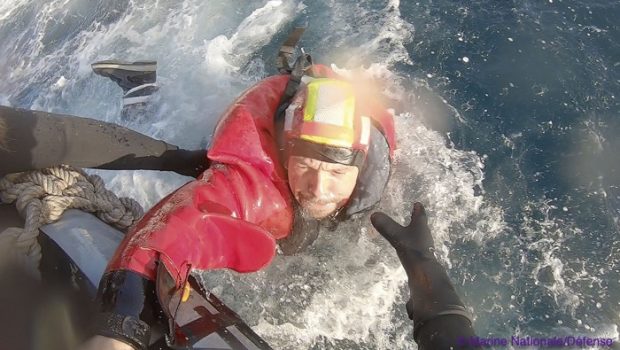

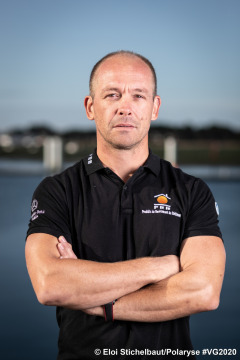

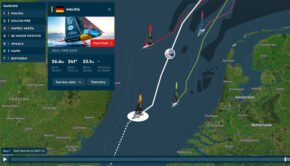
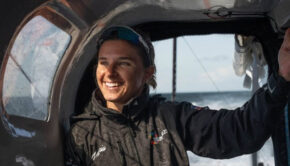
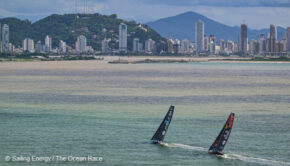
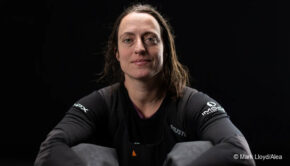
 We’ll keep your information safe.
We’ll keep your information safe.